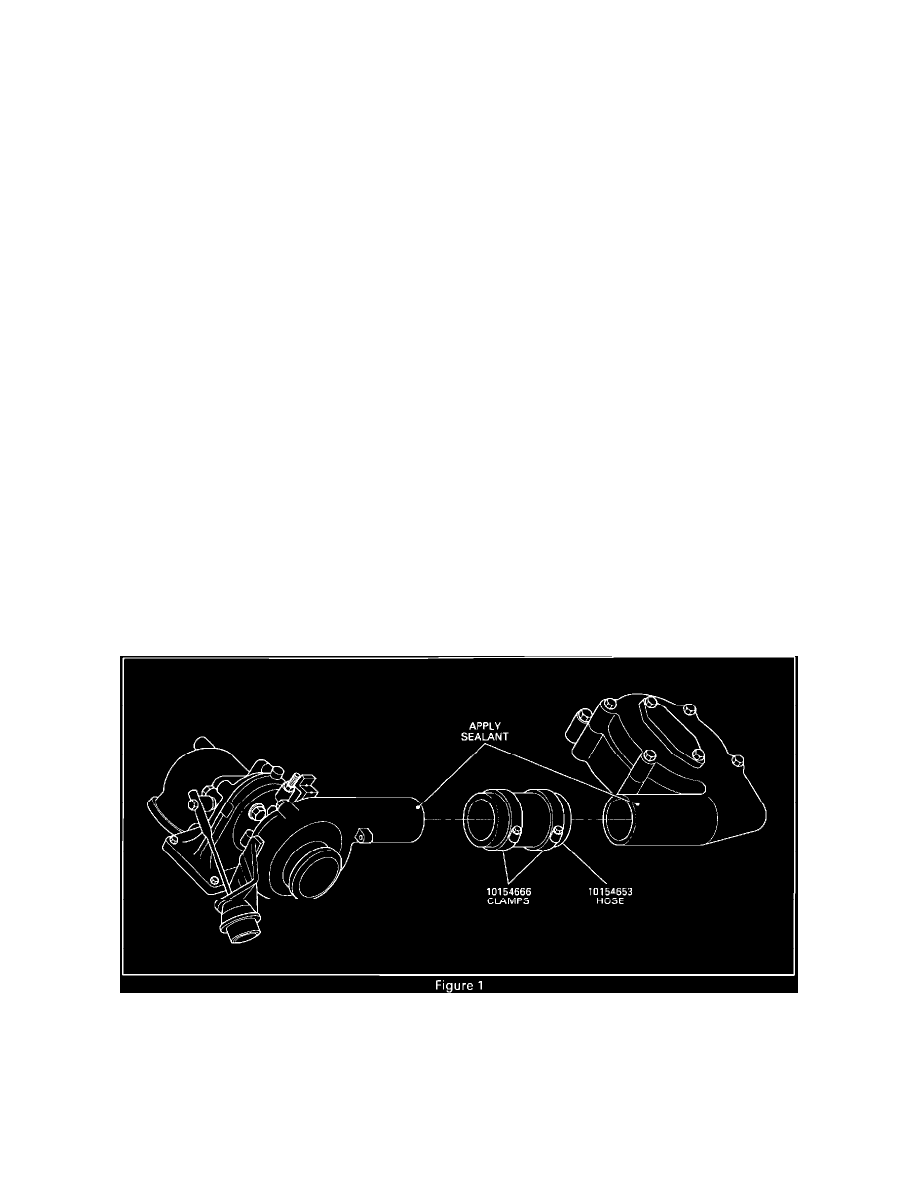K 2500 Truck 4WD V8-393 6.5L DSL Turbo (1992)

Oil Line: Customer Interest
Turbocharger - Oil Seepage At Hose Connections
BULLETIN NUMBER:
92-6A-141
SECTION:
6A
NUMBER:
2
CORPORATE
REFERENCE NUMBER:
276112
DATE:
October 1992
SUBJECT:
OIL SEEPAGE AT TURBOCHARGER HOSE CONNECTIONS (APPLY SEALANT)
MODELS:
1992 C/K TRUCK (VIN F - RPO L65)
CONDITION:
Some 1992 model year C/K trucks with 6.5L turbo diesel engines (VIN F) may exhibit an oil wicking/seepage condition around the turbocharger
compressor hose connections. Upon inspection of the turbocharger system, oil is found in the turbocharger compressor housing and outlet ducting.
CAUSE:
Due to the closed breather system, oil found in the turbocharger intake duct, compressor housing, and the compressor out air duct is NORMAL. The oil
vapors removed from the crankcase depression regulator valve (CDRV) are discharged into the compressor inlet and condense in the inlet system. THE
TURBOCHARGER SHOULD NOT BE REPLACED FOR THIS CONDITION. External oil seepage/wicking around the compressor outlet or intake
manifold inlet is due to a poor hose connection (rough mating surface area, low torqued clamps, etc.).
CORRECTION:
At the hose mounting locations, clean the oil wet metal components thoroughly. Install a new hose and new clamps, applying a thin coating of GM
sealant 12345336 or 12345739 to the metal surfaces prior to hose installation (see figure). Tighten the inlet ducting to the proper torque specification,
4.5 to 5.6 N-m (40 to 50 lbs.in.). Wipe any excessive sealant extruding from hose ends. Parts are currently available from GMSPO.
Important
If the vehicle exhibits more than a seepage/wicking condition, wash the engine components thoroughly, add florescent dye to the engine oil, operate the
vehicle to find the true oil leak path, and correct.
